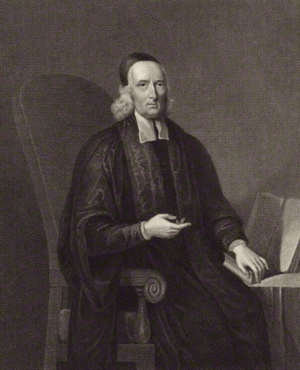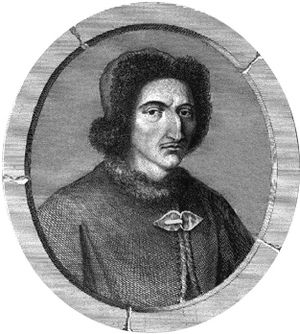George Wheler (travel writer) facts for kids
Sir George Wheler (born January 20, 1651 – died January 15, 1724) was an English clergyman and a famous travel writer. He is best known for his exciting journeys through Greece and other parts of the Middle East. He brought back many ancient treasures and new plants to England.
Contents
Early Life and Education
George Wheler was born on January 20, 1651, in Breda, Netherlands. His family, who supported the King, was living there in exile at the time. He was the son of Charles Wheler, a colonel in the Life Guards.
Young George went to school in Wye, Kent, and later studied at Lincoln College, Oxford. He became a student at the Middle Temple in 1671, which was a place for studying law.
Amazing Journeys and Discoveries
In October 1673, Sir George Wheler began a grand tour of Europe. He traveled through France, Switzerland, and Italy. While in Italy, he learned about ancient artifacts.
In June 1675, in Venice, he met Jacob Spon, a French doctor and scholar. They decided to travel together. Their adventure took them through Greece and the Middle East from 1675 to 1676.
They visited many important historical places. These included Zante, Delos, Constantinople (now Istanbul), Ephesus, Delphi, and Athens.
Wheler brought back many ancient marbles and inscriptions from Athens. He gave these valuable items to the University of Oxford in 1683. Today, you can see them in the Ashmolean Museum.
He also studied coins and plants during his travels. He brought home plants that had never been grown in Britain before. Famous botanists like John Ray received rare plants from him.
Return to England and Later Life
Sir George Wheler returned to England in November 1676. He was recognized for his achievements and was made a knight in 1682. This meant he was then known as "Sir George."
Around 1683, he became a clergyman. He held important positions in the church. From 1684, he was a canon at Durham Cathedral. He also served as a vicar in Basingstoke and a rector in Winston and Houghton-le-Spring. In Houghton-le-Spring, he even started a school for girls.
Sir George Wheler passed away in Durham on January 15, 1724. He was buried in Durham Cathedral.
Published Works
Sir George Wheler shared his experiences and knowledge through his books:
- A Journey into Greece (1682): This book described his travels and discoveries in Greece. It included many illustrations.
- Account of Churches and Places of Assembly of the Primitive Christians (1689): This book discussed early Christian churches.
- The Protestant Monastery; or Christian Œconomicks (1698): This book offered advice on how to lead a religious family life.
Lasting Legacy
Sir George Wheler left behind many valuable items. He gave his Greek and Latin manuscripts to Lincoln College. His collection of dried plants went to the University of Oxford. His coins, which included English, Greek, and Roman pieces, were given to Durham Cathedral.
He also helped build a chapel in Spital Fields, London, in 1693. This building is now known as St. Mary's, Spital Square. Wheler owned a lot of land in London and other parts of England.
Family Life
Sir George Wheler married Grace Higgons. They had a large family with eighteen children. Their daughter Judith Wheler married Thomas Sharp. Their son, Granville Sharp, became a famous person who worked to end slavery.



